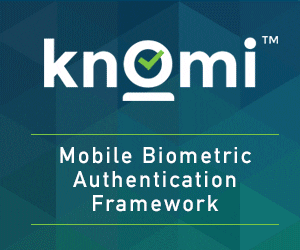Biometric technologies have been going through a process of mainstream adoption for several years now. Having once been considered the stuff of futuristic science fiction, things like fingerprint scanners are now commonplace across consumer smartphones, to name one popular example. But if there’s one form of biometric technology that has had the spotlight on it in recent years, it’s facial recognition.
For Face Biometrics Month at FindBiometrics, we’re going to be delving into this white-hot modality. To kick things off, we’ll take a look at the major reasons, both good and bad – but mostly good – that facial recognition now has such a high profile.
The X Factor
Facial recognition has been around for many years, of course. But to really understand its recent surge in popularity, it’s probably best to start with the most significant redesign of the iPhone since Apple first launched its smartphone line in 2007.
To begin with, Apple gets a lot of credit for the mobile biometrics revolution that has played out in the smartphone sector over the last several years. Apple didn’t invent the mobile fingerprint scanner, but when it implemented this feature in 2013’s iPhone 5s, it was definitely the most prominent smartphone brand to do so, by a wide margin. That prompted a whole new trend that swept over the mobile sector as rival smartphone makers sought to follow Apple’s lead and implement fingerprint scanning systems in their own devices.
So naturally it was a big deal when Apple ditched fingerprint scanning altogether on 2017’s iPhone X, pivoting over to facial recognition for user authentication. Launched alongside more traditional iPhone upgrades – the iPhone 8 and iPhone 8 Plus, both of which stuck with Touch ID fingerprint scanning – the iPhone X was framed by Apple as the next big leap for its flagship smartphone line.
It was a big hit. Rivals at the premium end of the mobile price spectrum were quick to follow suit, and Apple itself proceeded to make Face ID the central authentication mechanism of its subsequent iPhone devices, not counting this year’s budget-friendly iPhone SE. Now, a wide swath of smartphone makers have implemented ‘face unlock’ systems, making smartphone-based facial recognition commonplace for mainstream consumers.
Surveillance Under Scrutiny
The year after Apple’s Face ID system started to get smartphone uses excited about face authentication, this biometric modality started to get a lot of media attention for another, darker reason. In the spring of 2018, a report from the ACLU revealed that police in Orlando, Florida, had been using Amazon’s facial recognition system – dubbed ‘Rekognition’ – in surveillance applications. It was something of a bombshell revelation, with mainstream media proceeding to run with the story and shine a harsh spotlight on Amazon’s business practices with government actors.
The revelation came at a time of intensifying scrutiny of police interactions with Black communities in America, and of police killings of Black citizens in particular. Civil rights groups, political organizations, and others were raising serious concerns about police activities including surveillance. Facial recognition, many argued, represents a dangerous escalation of this problem.
The controversy has led to further media scrutiny and the legislation of facial recognition bans, and it has prompted high-profile industry players like Microsoft and IBM to publicly renounce the sale of facial recognition to government, even as Amazon has continued to defend its collaborations with law enforcement organizations. This remains a live issue today, and can’t be ignored as an important part of the broader conversation about face biometrics technologies.
COVID Means Contactless

Of course, face-based surveillance is a completely different application of facial recognition technology from consumer authentication applications like ‘face unlock’ on a smartphone; nor is it the same as biometric border security or access control. And it’s with respect to these latter use cases that we see the latest important trend driving the ascent of face biometrics: the COVID-19 pandemic is helping to further popularize contactless identification systems at airports, stadiums, businesses, and various other settings.
The reason is simple. The pandemic and its attendant social distancing protocols have pushed people away from the use of shared surfaces, and from close, in-person interactions. Face scans, meanwhile, don’t require physical contact, and can be performed at considerable distances. Face biometrics thus offer a practical solution to challenges in which people need to be identified at a physical space, but traditional mechanisms are out of favor.
At airports around the world, border authorities have been leaning toward face-based passenger screening for some time; but COVID-19 appears to have accelerated that trend. Other large venues, such as sports stadiums, are likewise looking to contactless biometric access control, as are businesses that need to get employees in the door efficiently – and a number of face-scanning access control systems have now integrated thermal screening to help managers keep potentially infected people out of facilities, and to facilitate contact tracing.
In all of these areas, COVID has helped to position facial recognition as a key contactless modality for improving efficiency and helping to safeguard public health. And the administrators looking to these solutions know that even if consumers are wary of facial recognition in policing, they’re enthusiastic about face scanning on their smartphones. It’s an increasingly familiar kind of biometric technology, and will only get a higher profile from here.
*
Face Biometrics Month is made possible by our sponsors: Aware, Inc., FacePhi, and FaceTec.
–
November 5, 2020 – by Alex Perala









Follow Us